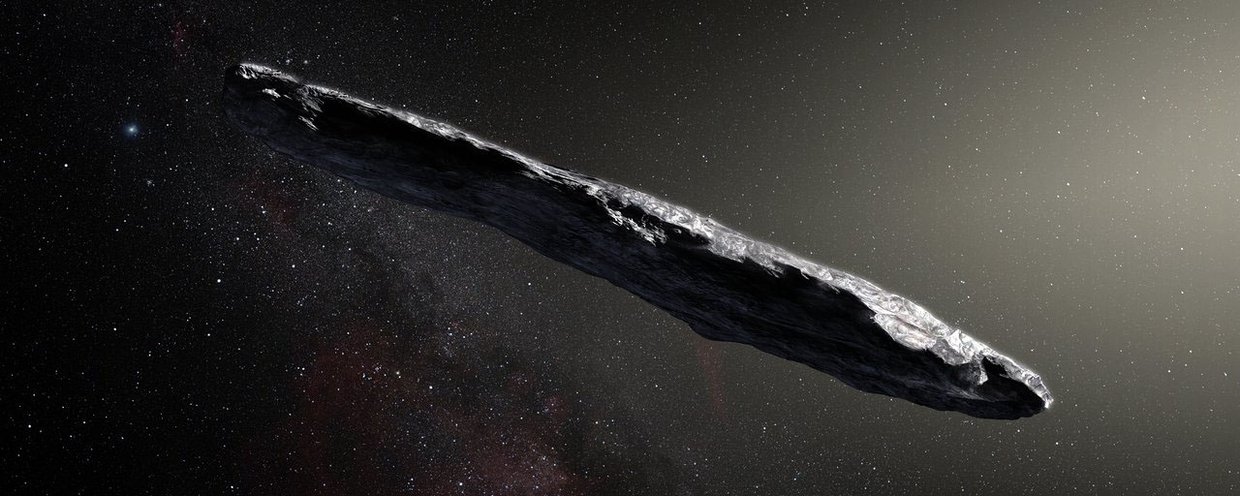
Two studies supported in part by the NASA Astrobiology Program have provided new insight into the possible origin of the object ‘Oumuamua, which was discovered in 2017 using the University of Hawaii’s Pan-STARRS1 telescope, funded by NASA’s Near-Earth Object Observations (NEOO) Program. ‘Oumuamua made headlines when it was determined to be the first interstellar object identified in our solar system. Ever since, scientists and the public alike have been curious about ‘Oumuamua’s origins.
When ‘Oumuamua’s hyperbolic orbit carried it close to the Sun, the object accelerated slightly. The new research indicates that this acceleration could be due to the evaporation of nitrogen (N2) ice. Thanks to the New Horizons mission, we now know that solar system objects like Pluto and Triton are covered in N2 ice. The researchers posit that ‘Oumuamua could be a fragment of a Pluto-like object that was ejected from its home system.

An artist's concept of interstellar object 1I/2017 U1 ('Oumuamua) as it passed through the Solar System after its discovery in October 2017. Observations of 'Oumuamua indicate that it must be very elongated because of its dramatic variations in brightnessImage credit: European Southern Observatory / M. Kornmesser.
Click here for a news announcement concerning this research from the Lunar and Planetary Institute.
The papers, “1I/‘Oumuamua as an N2 ice fragment of an exo‐Pluto surface: I. Size and Compositional Constraints” and “1I/‘Oumuamua as an N2 ice fragment of an exo‐pluto surface II: Generation of N2 ice fragments and the origin of ‘Oumuamua,” were published in the journal JGR Planets. The research benefitted from collaborations and/or information exchange within NASA’s Nexus for Exoplanet System Science (NExSS) research coordination network sponsored by NASA’s Science Mission Directorate. NExSS is a NASA research coordination network supported in part by the NASA Astrobiology Program. This program element is shared between NASA’s Planetary Science Division (PSD) and the Astrophysics Division.
Related:
Our Solar System’s First Known Interstellar Object Gets Unexpected Speed Boost (NASA)
In Depth | Oumuamua – NASA Solar System Exploration
NASA Learns More About Interstellar Visitor ‘Oumuamua (NASA)
